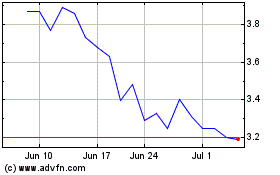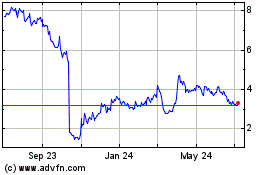Aldeyra Therapeutics, Inc. (Nasdaq: ALDX) (Aldeyra), a
biotechnology company devoted to developing and commercializing
next-generation medicines to improve the lives of patients with
immune-mediated diseases, today announced enrollment of the first
patient into the Phase 3 INVIGORATE Trial of topical ocular
reproxalap in patients with allergic conjunctivitis.
“Initiating enrollment in the INVIGORATE Trial moves us closer
to our goal of providing allergic conjunctivitis patients with a
new treatment option for one of the world’s most common ocular
conditions,” said Todd C. Brady, M.D., Ph.D., President and CEO of
Aldeyra. “Standard of care antihistamines are ineffective in nearly
a quarter of all allergic conjunctivitis patients, many of whom
require adjunct therapy, including corticosteroids, which cannot be
used chronically due to toxicity. We believe that reproxalap may
offer a durable and highly differentiated approach for the
treatment of ocular allergy, a condition that is increasing in
prevalence but has not benefited from the introduction of a novel
therapeutic approach in decades.”
The INVIGORATE Trial, which will enroll approximately 120
patients, is a randomized, double-masked, crossover
vehicle-controlled Phase 3 clinical trial to assess the efficacy
and safety of reproxalap ophthalmic solution (0.25%) compared with
vehicle using an allergen chamber. Consistent with prior allergic
conjunctivitis trials, the primary endpoint will be
subject-reported ocular itching score.
In Aldeyra’s Phase 2 allergen chamber clinical methods trial,
completed in March 2019, 0.25% reproxalap demonstrated highly
statistically significant reductions from vehicle in ocular itching
and redness.
More information about the INVIGORATE Trial is available on
www.clinicaltrials.gov (NCT04207736).
About Reproxalap Reproxalap is a novel, small-molecule
immune-modulating covalent inhibitor of RASP (reactive aldehyde
species), which are elevated in ocular and systemic inflammatory
disease, and lead to activation of intracellular inflammatory
factors, including NF-kB, inflammasomes, and Scavenger Receptor A.
Reproxalap’s mechanism of action has been validated with the
demonstration of statistically significant and clinically relevant
activity in multiple physiologically distinct late-phase clinical
indications.
About Allergic Conjunctivitis Allergic conjunctivitis
affects more than 1 billion people worldwide,1 including more than
100 million in the U.S.2 The disease is thought to be mediated in
part by RASP. The signs and symptoms of allergic conjunctivitis –
ocular itching, redness, and tearing – are persistently disturbing,
affecting quality of life and leading to loss of work that can
create a substantial economic burden for patients and families.3
Allergic conjunctivitis is hyperendemic and prevalence is
increasing. Although allergic conjunctivitis is one of the most
common diseases treated by ophthalmologists and optometrists, in
many cases physicians and patients report that currently available
therapy is inadequate. Today, nearly one in five allergic
conjunctivitis patients requires corticosteroids or other
adjunctive therapy in addition to antihistamines.
About Aldeyra Therapeutics Aldeyra Therapeutics is a
biotechnology company devoted to developing and commercializing
next-generation medicines to improve the lives of patients with
immune-mediated diseases. Aldeyra's lead investigational drug
product candidates are potential first-in-class treatments in
development for dry eye disease, allergic conjunctivitis,
proliferative vitreoretinopathy, and Sj�gren-Larsson Syndrome. The
company is also developing other product candidates for retinal and
systemic inflammatory diseases.
Safe Harbor Statement This release contains
forward-looking statements within the meaning of the Private
Securities Litigation Reform Act of 1995, including statements
regarding Aldeyra's strategy, future operations, future financial
position, projected costs and expenses, prospects, plans, and
objectives and Aldeyra's plans and expectations for its product
candidates, including plans relating to the clinical development or
commercial potential of reproxalap. Aldeyra intends such
forward-looking statements to be covered by the safe harbor
provisions for forward-looking statements contained in Section 21E
of the Securities Exchange Act of 1934 and the Private Securities
Litigation Reform Act of 1995. In some cases, you can identify
forward-looking statements by terms such as, but not limited to,
"may," "might," "will," "objective," "intend," "should," "could,"
"can," "would," "expect," "believe," "anticipate," "project," "on
track," "scheduled," "target," "design," "estimate," "predict,"
"potential," "aim," "plan" or the negative of these terms, and
similar expressions intended to identify forward-looking
statements. Such forward-looking statements are based upon current
expectations that involve risks, changes in circumstances,
assumptions and uncertainties. Aldeyra is at an early stage of
development and may not ever have any products that generate
significant revenue. All of Aldeyra's development timelines may be
subject to adjustment depending on recruitment rate, regulatory
review, preclinical and clinical results, and other factors that
could delay the initiation or completion of clinical trials.
Important factors that could cause actual results to differ
materially from those reflected in Aldeyra's forward-looking
statements include, among others, the timing of enrollment,
commencement and completion of Aldeyra's clinical trials, the
timing and success of preclinical studies and clinical trials
conducted by Aldeyra and its development partners; updated or
refined data based on Aldeyra's continuing review and quality
control analysis of clinical data, Aldeyra's ability to design
clinical trials with protocols and endpoints acceptable to
applicable regulatory authorities; delay in or failure to obtain
regulatory approval of Aldeyra's product candidates; the ability to
maintain regulatory approval of Aldeyra's product candidates, and
the labeling for any approved products; the risk that prior
results, such as signals of safety, activity or durability of
effect, observed from preclinical or clinical trials, will not be
replicated or will not continue in ongoing or future studies or
clinical trials involving Aldeyra's product candidates; the scope,
progress, expansion, and costs of developing and commercializing
Aldeyra's product candidates; uncertainty as to Aldeyra’s ability
to commercialize (alone or with others) Aldeyra's product
candidates following regulatory approval, if any; the size and
growth of the potential markets and pricing for Aldeyra's product
candidates and the ability to serve those markets; Aldeyra's
expectations regarding Aldeyra's expenses and revenue, the
sufficiency or use of Aldeyra's cash resources and needs for
additional financing; the rate and degree of market acceptance of
any of Aldeyra's product candidates; Aldeyra's expectations
regarding competition; Aldeyra's anticipated growth strategies;
Aldeyra's ability to attract or retain key personnel; Aldeyra’s
limited sales and marketing infrastructure; Aldeyra's ability to
establish and maintain development partnerships; Aldeyra’s ability
to successfully integrate acquisitions into its business; Aldeyra's
expectations regarding federal, state and foreign regulatory
requirements; regulatory developments in the United States and
foreign countries; Aldeyra's ability to obtain and maintain
intellectual property protection for its product candidates; the
anticipated trends and challenges in Aldeyra's business and the
market in which it operates; and other factors that are described
in the "Risk Factors" and "Management's Discussion and Analysis of
Financial Condition and Results of Operations" sections of
Aldeyra's Annual Report on Form 10-K for the year ended December
31, 2018 and Aldeyra's Quarterly Report on Form 10-Q for the
quarter ended September 30, 2019, which are on file with the
Securities and Exchange Commission (SEC) and available on the SEC's
website at www.sec.gov. Additional factors may be set forth in
those sections of Aldeyra's Annual Report on Form 10-K for the year
ended December 31, 2019, expected to be filed with the SEC in the
first quarter of 2020.
In addition to the risks described above and in Aldeyra's other
filings with the SEC, other unknown or unpredictable factors also
could affect Aldeyra's results. No forward-looking statements can
be guaranteed, and actual results may differ materially from such
statements. The information in this release is provided only as of
the date of this release, and Aldeyra undertakes no obligation to
update any forward-looking statements contained in this release on
account of new information, future events, or otherwise, except as
required by law.
1 White Book on Allergy (2013 Update) 2 Singh K, Axelrod S,
Bielory L. The epidemiology of ocular and nasal allergy in the
United States, 1988-1994. J Allergy
ClinImmunol.2010;126(4):778-783.e6 3 Andrew D. Pitt, Andrew F.
Smith, Lynda Lindsell, Li Wern Voon, Peter W. Rose & Anthony J.
Bron (2004) Economic and quality-of-life impact of seasonal
allergic conjunctivitis in Oxfordshire, Ophthalmic Epidemiology,
11:1, 17-33, DOI: 10.1076/opep.11.1.17.26437
View source
version on businesswire.com: https://www.businesswire.com/news/home/20200121005283/en/
Corporate Contact: David McMullin Aldeyra Therapeutics,
Inc. Tel: 781-761-4904 ext. 218 dmcmullin@aldeyra.com Investor
& Media Contact: Scott Solomon Sharon Merrill Associates,
Inc. Tel: 617-542-5300 ALDX@investorrelations.com
Aldeyra Therapeutics (NASDAQ:ALDX)
Historical Stock Chart
From Mar 2024 to Apr 2024

Aldeyra Therapeutics (NASDAQ:ALDX)
Historical Stock Chart
From Apr 2023 to Apr 2024
